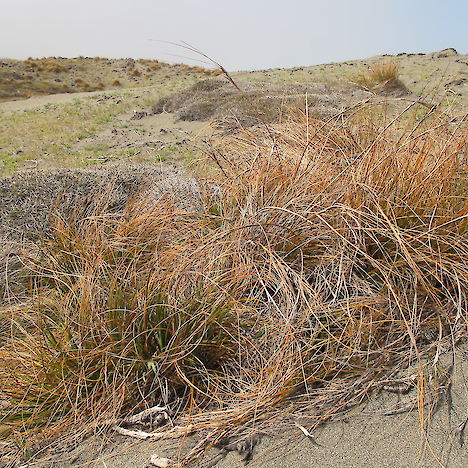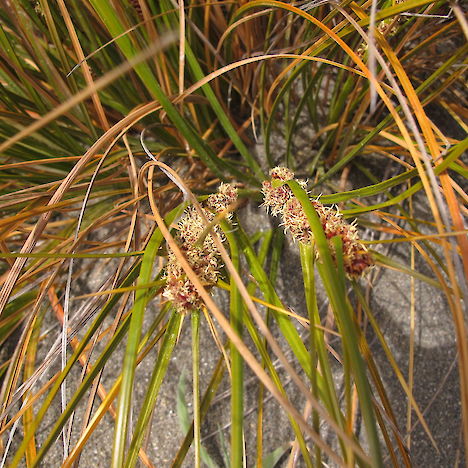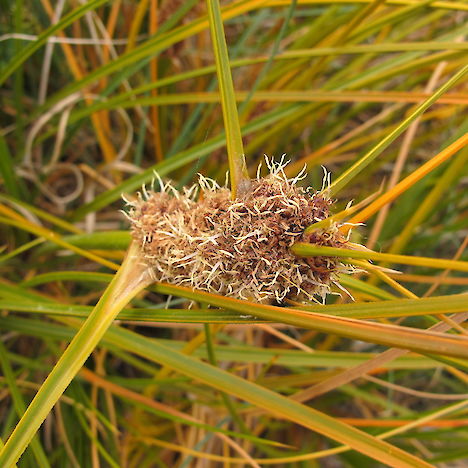Other names:
Desmoschoenus spiralisThreat category:
At Risk: Declining?Regions:
Northland, Auckland, Waikato, Bay of Plenty, Gisborne, Hawkes Bay, Manawatu-Wanganui, Taranaki, Wellington, Nelson-Tasman, Marlborough, Westcoast, Canterbury, Otago, SouthlandDistribution:
North and South Islands
Key Features
- A stout, tufted, sand-binding sedge 50-90 cm tall, with coarse green to orange leaves that are borne on thick stems that run along the sand surface before becoming buried. Conspicuous dark reddish flowering stems have flowers arranged in spiral clusters up the stem.
Distribution and Habitat
- Sand dunes throughout New Zealand, but greatly reduced from its historic range.
Threats
- Habitat modification and loss.
- Rabbit and possum browsing of seedlings.
- Competition from marram grass.
- Dune stabilisation and compaction.
- Trampling and vehicle traffic.
Management Opportunities
- Survey for new locations.
- Mark known sites.
- Protection of habitat – avoid afforestation.
- Control of marram grass.
- Restrict access by vehicles.
- Possum control by poisoning or trapping.
- Rabbit control by poisoning or shooting.
- Re-establish in appropriate sites.
Monitoring Options
- Check existing populations annually.
- Report new locations to DOC, NZPCN.
Further Information and Support
- New Zealand Plant Conservation Network (NZPCN). http://www.nzpcn.org.nz
- Pest and marram grass management - DOC, Regional Councils
- References:
- Dopson, S.R.; de Lange, P.J.; Ogle, C.C.; Rance, B.D.; Courtney, S. & Molloy, J. (1999). The conservation requirements of New Zealand’s nationally threatened vascular plants. Threatened Species Occasional Publication 13. Department of Conservation, Wellington.
- Bergin, D.O. & Herbert, J.W. (1998). Pingao on coastal sand dunes. Guidelines for seed collection, propagation and establishment. CDVN Technical Bulletin No. 1. Forest Research Institute, Rotorua.
- Wilson, H.D. (1994). Field guide. Stewart Island Plants. Manuka Press, Christchurch





